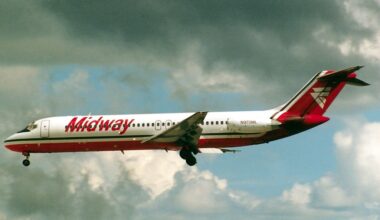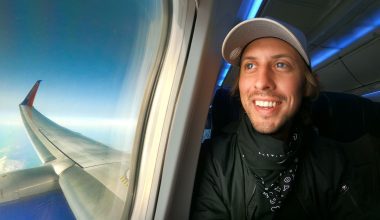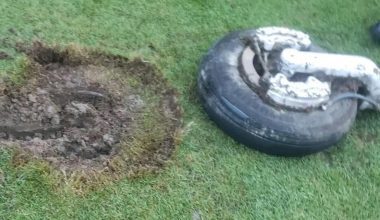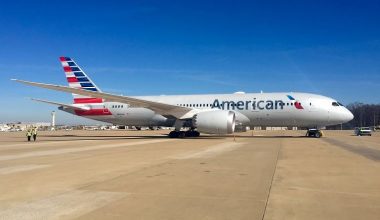You don’t have to go to the International Space Station to experience the awesome sensation of weightlessness. Unlike in the past, weightlessness’s beauty isn’t limited to NASA anymore. The general public can now experience 5 minutes in outer space by taking parabolic flights. Parabola flights take flying to a new level where you can float, flip, and soar as if in outer space. What exactly is a parabolic flight?

Parabolic flight
A parabolic flight is a special type performed by a specialized aircraft that provides brief near-weightless environments for passengers. The specially modified aircraft flies a series of parabolic arcs to create a weightless environment in the cabin. A parabolic flight is a ticket to enjoying the pleasure of floating effortlessly and experiencing the weightlessness in the airplane.
Parabolic flights are also called weightless flights since they reproduce gravity-free conditions in an aircraft by flying aerobatic maneuvers. To create a weightless environment, the pilot performs parabolas aerobatic maneuvers- first climbing and then entering a powered dive. Each parabolic maneuver takes about ten miles of airspace to recreate a state of weightlessness inside the plane for 22 seconds.
How to perform a parabolic flight?
A standard commercial airplane can’t perform a parabolic flight as this requires complex maneuvering. The aircraft flying parabolic arcs usually have a quite different flight control set-up, and their pitching and roll control commands are dissociated. Pilots who perform aerobatic aerial maneuvers must undergo specialized training outlined in the Code of Federal Regulations.
Certified pilots operate parabolic flights in special flight zones, e.g., FAA-designated airspace blocks. These zones are usually far away from terrain disturbances and have less dense air traffic. Parabolic flights are best performed over the sea to steer clear of irregular motion of air, i.e., turbulence.
Also Read: Flying and health: Cosmic radiation exposure for frequent flyers and Aircrew
Unlike commercial flights, parabolic flights are conducted by three pilots who maintain a near-zero acceleration level in three axes. Each pilot has a separate role to play during the parabolic maneuvers to ensure zero-gravity precision. The first pilot controls the up or down movement of the nose of the aircraft (pitching). Similarly, the second and third pilots control the roll movement and engine speed, respectively.
The parabolic flight takes off like any other flight, but the real process starts when the aircraft reaches an altitude of 24000 feet. The retrofitted plane follows a parabolic flight path relative to the Earth’s center, at 45 degrees pitch up and down movements. The pilots perform parabolic maneuvers between 24,000 and 34000 feet altitude several times throughout the flight.
Stages of parabolic flights
The specialized aircraft performing parabolic flights gives its occupants a sense of weightlessness by flying in a parabolic arc. The parabolic maneuver during a Zero-Gravity flight lasts nearly one minute from start to finish and has three stages. These stages include the parabola pull-up (also known as nose-up), the parabola curve (the zero-gravity phase), and the pull-out.
- Parabola pull-up
In this stage, the aircraft climbs with a pitch angle of 45 degrees relative to the horizon until reaching 32,000 feet. The pilot pulls up the nose of the plane to approximately 45 degrees (nose high) using engine thrusts and elevator controls. The forces are roughly twice that of Earth’s gravity, and passengers experience a pull of 1.8g (hypergravity). This lasts for about 20 seconds.
- Parabolic curve
In the second stage, at 32,000 feet, the pilot minimizes the thrust and lowers the nose to maintain a neutral configuration. The plane pushes over the top to follow a ballistic trajectory. The weightlessness begins when the plane enters the zero-gravity segment of the parabola. The plane behaves as if it was free-falling in a vacuum, and everything in it is weightless for the next 22 seconds. The weightless period continues all the way ‘up and over the hump,’ allowing passengers to float through the cabin.
Parabola pull-out
In the last stage, i.e., parabola pull-out, the pilot tilts the nose of the plane at a downward pitch angle of around 45 degrees. Passengers once again experience an increased gravity of up to 1.8G on the way down for about 20 seconds. Then, the aircraft returns to a horizontal trajectory enabling flyers to gradually return to the cabin floor. The maneuver repeats again throughout the flight.
Thus, beyond true weightlessness experience on top of the curve, hypergravity is also part of a ride. Parabolic flight is an emotion-filled flight that guarantees a new sensation of weightlessness in each parabolic maneuver.
In addition to zero gravity, passengers can also experience a reduced gravity environment onboard the specially modeled aircraft. To give passengers a range of experiences, the aircraft flies in arcs that simulate Lunar or Martian gravity levels. Passengers feel one-third of their weight during the Lunar gravity period and one-sixth during the Martian. The reduced gravity environments are created with a modern parabola by adjusting the angle of attack.
Parabolic flights for scientific purposes
Parabolic flights are dedicated to scientific experiments involving near-weightless environments. Scientists and researchers conduct parabolic flights to examine the effects of weightlessness on a living organism. Such flights provide a microgravity environment for scientists to run short-duration scientific and technological investigations in reduced gravity. The unprecedented access allows them to conduct vigorous research in Martian, Lunar, Zero, and hypergravity environments.
Parabolic flights also allow space equipment technological testing and validation.
Parabolic flights are also useful for training astronauts working on various space missions. Besides, important data gathered from parabolic flight experiments can be modified to achieve desired outcomes for spaceflights. As parabolic flights are hands-on, experiments flown on such flights can be modified and monitored as researchers float around.
The parabolic flight campaigns for scientific purposes usually offer 30 parabole on each flight totaling about 10 minutes of weightlessness. Such campaigns are a crucial first step for corporations, governments, and individuals toward accomplishing their space research objectives.
Parabola flights for a lifetime experience
A parabola flight presents a once-in-a-lifetime opportunity for the general public to fly through the air gracefully. It is a unique experience that frees you from gravity and your body weight. Without a parachute or a harness, you can float through the air gracefully and soar like Superman. Parabolic flights offer you a sense of wonderment, unbridled joy, and a memory of weightlessness that stays with you forever.
These flights are also known as discovery flights because they deliver experiences you can’t have on Earth. You can be an astronaut for a day and feel the weightlessness possible in outer space. Discovery flights generally offer 15 parabolas, each including around 20 seconds of weightlessness. Moreover, the lunar or martian gravity level simulation means you can experience the exhilaration of walking on the planet’s surface.
Zero Gravity Corporation
Zero Gravity Corporation, well-recognized as Zero-G, is an FAA-certified provider of weightless flights based in Florida, US. The company has a specialized Boeing 727 G-Force One (registered as N794AJ) to operate parabolic flights. Zero-G passengers on each trip wear flight suits and experience true weightlessness during 15 parabolas. The modified Boeing 727-227F Advanced aircraft will perform 15 parabolic maneuvers over a 90-100 minute flight.
Passengers aged eight and up can participate in the Zero-G experience. The Zero-G parabolic flight cost is not cheap as it starts at $9070 + 5.2 % tax per passenger. The cost covers a Zero-G flight suit, Zero-G merchandise, 15 periods of weightlessness, including lunar gravity, and a flight completion pin. Besides, customers will also get photos and videos of the flight, reminding them of a subtle weightless experience.
Flyers need to take a brief training session before their weightless flight. Then they will take off from the airport and head towards designated airspace. After conducting 12 parabolas, G-Force One will return to the same airport from which it took off.
Novaspace Air Zero G
Novaspace, the French National Center for Space Studies (CNES) subsidiary, operates parabolic flights in Europe. Based in Bordeaux, France, the company flies a modified Airbus A310 Zero-G, offering gravity-free discovery flights to the public.
Novaspace parabolic flights in the Airbus A310 Zero G are marketed by Avico and mainly occur from Bordeaux-Merignac, France. These flights promote European space research and are accessible to individuals and companies outside the space industry. The retrofitted Airbus A310 Zero G gives an incredible opportunity for individuals to discover the wonders of weightlessness.
The gravity-free discovery flights are in addition to the company’s scientific parabolic flight campaigns. Novaspace has flown hundreds of scientific flight campaigns while providing access to a proven environment for experiments.
Novaspace’s Zero G discovery flights can set you back 6000 to 8000 euros per person. While it is costly, the experience you will get truly outweighs this cost.
Escape the boundaries of perception and be an astronaut for a day by taking parabolic flights.






